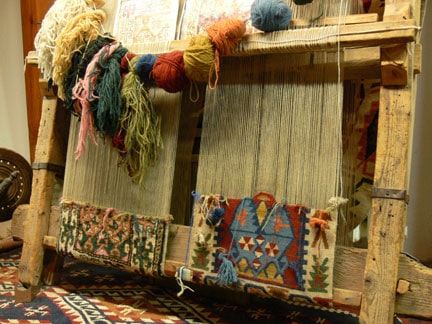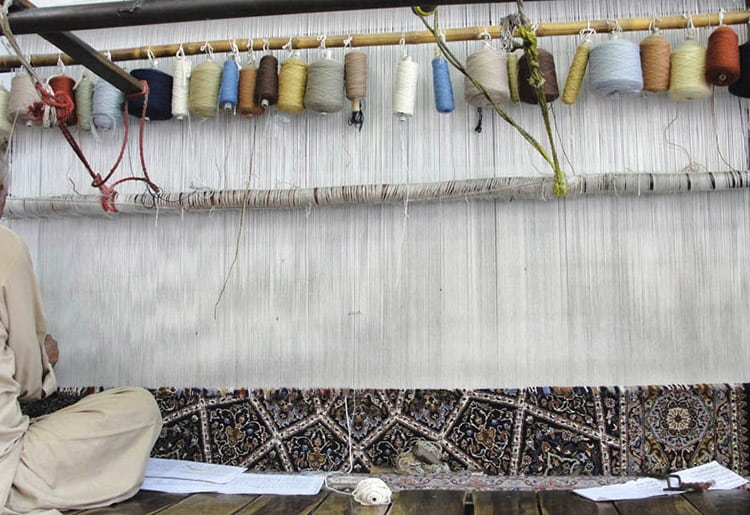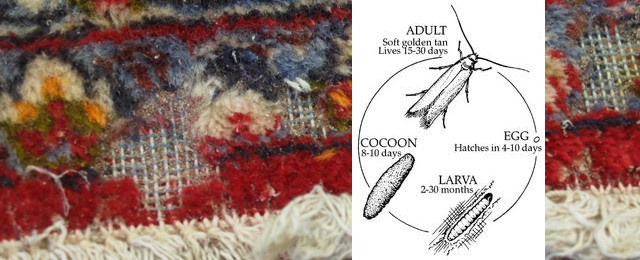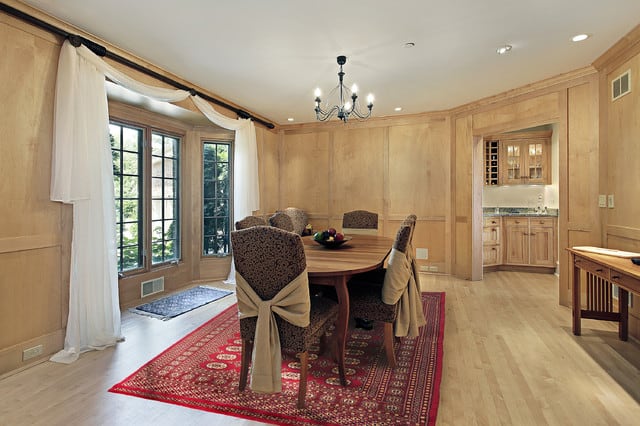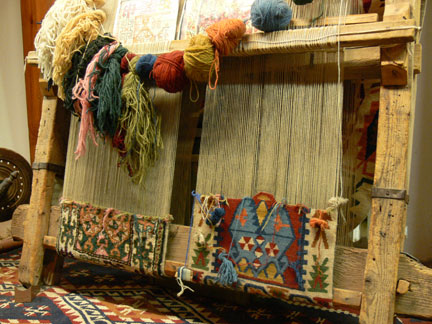 It is not easy for normal folks who are not trained in identifying rugs to know the distinction between an authentic handmade Oriental rug and a machine made rug. Hand-woven and hand knotted rugs are also known as Oriental rugs and are mostly collectibles due to their quality. The quality of Oriental rugs hugely depends on the yarns’ quality, dyes used and knot count among other factors.
It is not easy for normal folks who are not trained in identifying rugs to know the distinction between an authentic handmade Oriental rug and a machine made rug. Hand-woven and hand knotted rugs are also known as Oriental rugs and are mostly collectibles due to their quality. The quality of Oriental rugs hugely depends on the yarns’ quality, dyes used and knot count among other factors.
You will find rugs knotted by hand are made through a loom specially designed and knotted through the use of the hand. Hand knotted oriental rugs have been made for centuries through an ancient art that can only be admired. The loom’s size depends on the rug’s size with the weaving carried out moving from the bottom going up to the top. The weaver of the rug usually interleaves the “knots” into the rug’s groundwork, which are hand tied, something that makes the rug’s pile. It is a very time consuming and tedious operation.
The Back of the Handmade Oriental Rug
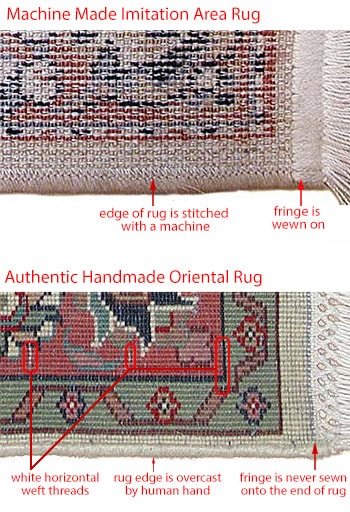
Front part of the Handmade Oriental Rug
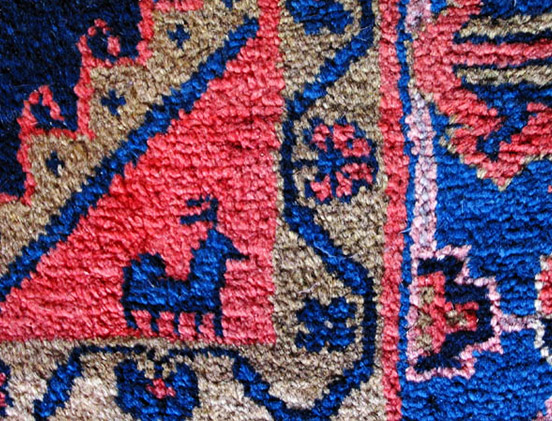
Changes in Handmade Oriental Rug Colour
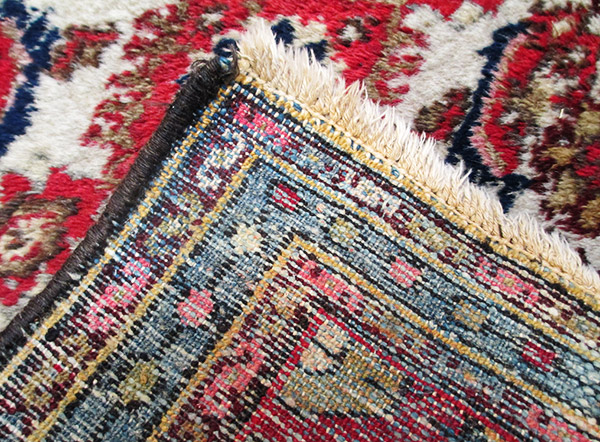
Wool pile
It is worth noting handmade rugs in most cases have wool pile used to weave them. A rug made by a machine is mostly made through the use of a polyester or nylon pile while weaving is very uniform. Towards the rug’s back, you might find some white thread weaves from one end of the fringe to the other. You might also not see any white threads in the rug at all (but this is not really common).
Visual Handmade Oriental Rug Differences
There is always a very strong difference between a handmade and machine made rug visually. This is so especially on the machine-made rug’s back which is very distinct in terms of appearance to a handmade rug’s back. You will find the design of the machine made rug’s back not as colourful as the back of the hand-woven Oriental rug. The face and back of the machine rug are very different in terms of colour and there is a reason for this.
While the machine made rug has its edges machine overstitched and a fringe applied, the handmade Oriental rug has the edge overcast using the hand as the fringe is essentially the warp strings’ end and not one that has been sewn upon it. The machine made rug has overstitch patterns running across its back and distinguishing individual knots appearing on the back are not easy to find. In fact, for the machine-made rug, the overstitch construction is generally what keeps the pile material held together.
This means that the fringe is applied on a machine made rug once it has been completed while the hand-woven Oriental rug has its fringe as a part of warp strings as they leave the handmade rug’s end.
Electrically made rugs
Machine made rugs are usually made using power looms, which are essentially large machines. The power loom is automated electrically and computer controlled. As a result, rugs made by machines are manufactured very fast using materials such as synthetic fibers and wool like art silk, acrylic, polyester, nylon and polypropylene. Machine-made generally don’t try to imitate hand-made rugs and look perfect in design.
Rug Cost
The price of the Oriental rug and machine made rugs differ a lot. While an Oriental rug is very expensive, a machine made rug costs much less and is an alternative to expensive hand knotted or hand-woven rugs. However, countries of origin like Persia, India, China, Egypt and Afghanistan, do offer significantly cheaper handmade Oriental rugs at a fraction of the price at which they are offered in Canada and other parts of North America. So, it may be worth it to travel to those countries if you are interested in purchasing a quality handmade Oriental rug.
Rug Durability
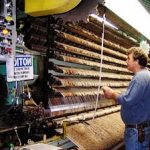
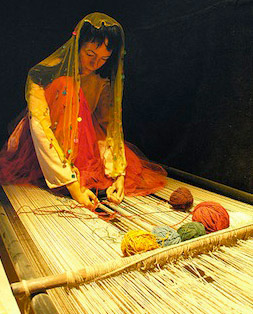 Hand knotted rugs are usually made through a number of natural materials such as jute, silk, cotton and wool. In most cases, silk is used in rugs made of wool for the pattern’s highlights or outlines to improve the design. Hand woven and hand knotted rugs are very durable and can last for ages if they are properly maintained and of great quality.
Hand knotted rugs are usually made through a number of natural materials such as jute, silk, cotton and wool. In most cases, silk is used in rugs made of wool for the pattern’s highlights or outlines to improve the design. Hand woven and hand knotted rugs are very durable and can last for ages if they are properly maintained and of great quality.In case you find a rug is nap blended using synthetic polymers with wool or contains polyolefin or polypropylene, it is most certainly made by a machine. At the same time, a rug identified as an Oriental but was made in Italy, Belgium or any other place in western part of Europe is more likely to be a machine made rug.
Identifying Oriental rugs becomes even harder when it comes to wool piles made from Egypt, Turkey and other countries in central Europe such as Bulgaria, Albania and Romania. Each of these nations has produced hand-woven Oriental rugs for about fifty years now, including a production of immense numbers of Oriental rugs imitations through machines. This is why we would suggest you do not buy handmade Oriental rugs from Bulgaria, Albania and Romania. These countries have perfected the art of handmade rug imitations and most people wouldn’t know the difference. However, these countries would be a good place to get an authentic handmade Oriental rug imitation for a low price (if you are a good negotiator).
Even after using these tips and still can’t identify an Oriental rug from a man made one, you can always turn to a trustworthy expert for help. Reputable rug shops in the greater Toronto area and across Canada would be a good starting point. Always check company reviews online to make sure a company is reputable.
We hope this article answered some of the questions you had about identifying authentic handmade Oriental rugs and helped you make better decisions with rug purchases.

